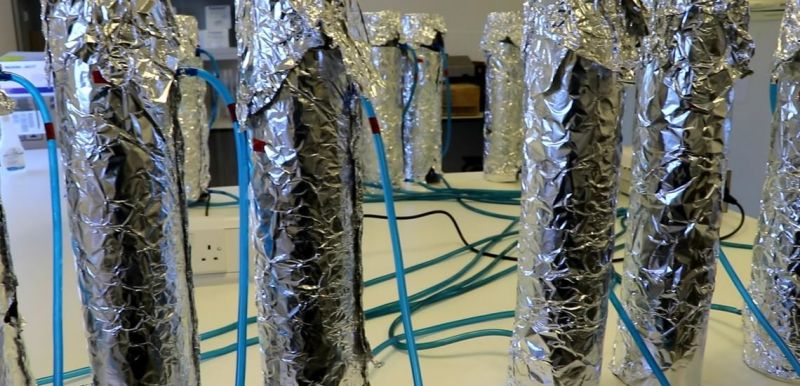Drive to Remove Phosphorus from Waste Water
Published on by Water Network Research, Official research team of The Water Network in Technology
Southern Water cooperates with the University of Portsmouth to investigate the best way to remove phosphorus from the water released into the environment after the treatment.
By Southern Water

Cyclinders of pure science, Source: Southern Water
From outside the gate, Southern Water's site at Petersfield might look the same as any of the scores of waste treatment plants which clean up water from the millions of toilets and drains connected to our network, writes Rebecca Kennedy, Research and Development Planner.
But inside the main building, a secret hides. That's because Petersfield is a joint innovation hub where Southern Water cooperates with the University of Portsmouth to investigate the best way to remove phosphorus from the water we release into the environment after we finish treating it. One lab contains silver cylinders and a network of tubes - the experiment of PhD student Saskia Benzig who is testing different sorts of material for their ability to take the P out of waste water.
Phosphorus (P on the periodic table) is an element that is vital for the growth of all living organisms (including humans!), it’s found naturally in the soil and in water and is perfectly safe in normal amounts. It’s only when P makes it into the natural environment in unusual amounts that it can cause a problem.
P is used in agriculture to maintain high yields of crop growth, so farmers add it to their fields to improve how much they can grow. When it rains, P gets washed off the fields into rivers – this accounts for about 20% of excess P in the natural environment. When we eat, we ingest phosphorus too, but only a bit of it is used in our bodies – the rest we flush down the toilet. Yet another source of phosphorus compounds in waste water is shampoos and conditioners which only adds to the problem.
As things stand, after your waste goes through a treatment works, some phosphorus can be left, which is then released into the water environment.
As it’s so good at making things grow, when phosphorus gets into water courses like rivers and lakes, it makes algae in the water grow and build up very quickly, which causes problems for anything else living in the water. The algae and the phosphorus block light from getting into the water, which kills off the plants living in the water. When the plants die off, there is less oxygen available for the animals living in the water to breath, so they start to die off too. This process is known as eutrophication.
There are a number of ways of taking P out of our waste water before we release it into the environment. However, these are mostly useful for big treatment works that serve a large population. Southern Water has a lot of sites in areas like the South Downs, which are very protected and also have very small populations living near them. The usual routes aren’t really appropriate for how we need to work as they aren’t very efficient for small sites. So, we are looking into some new and innovative ways of treating P and help keep our rivers and streams healthy.
Read full article and watch a video: Southern Water
Media
Taxonomy
- Wastewater Use
- Reclaimed Wastewater
- Decontamination
- Decontamination
- Wastewater Treatment
- Wastewater Collection
- Water & Wastewater